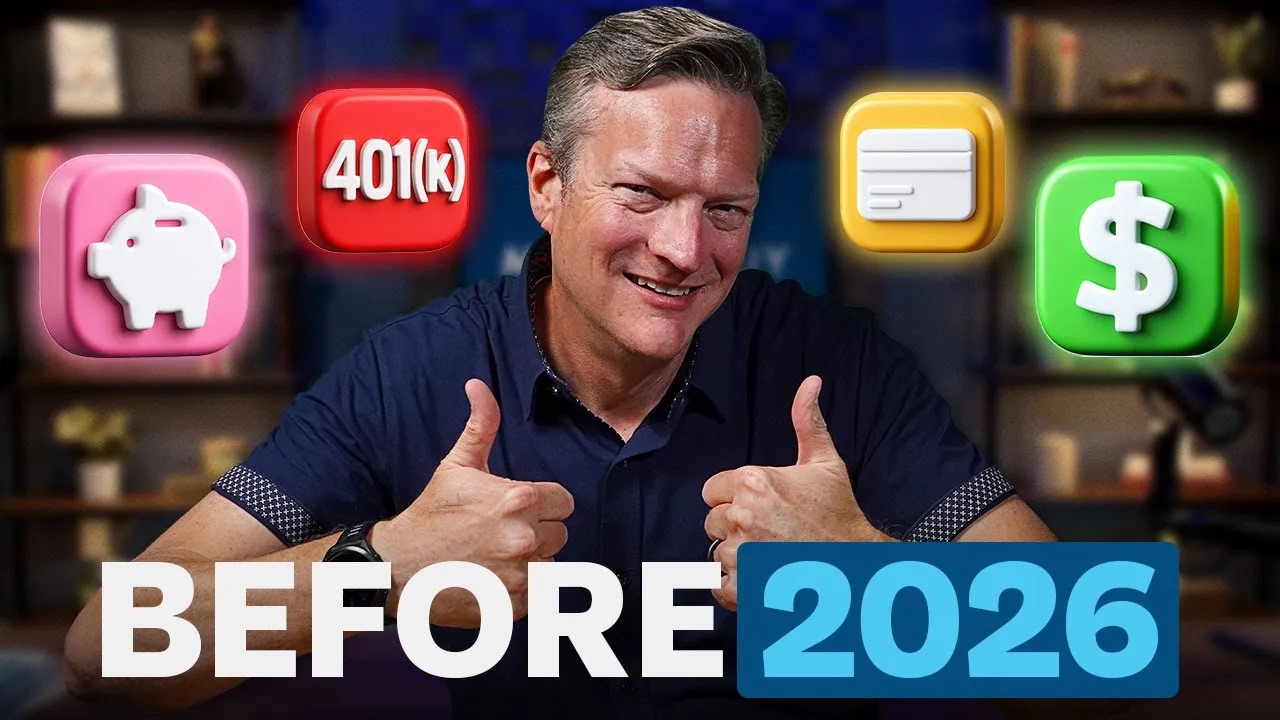But then you’ve got to make it to step three. You’ve got to actually figure out how to calculate the number. Luckily, we’ve done this for you guys. Let me tell you what we’re going to be covering as we cover this calculator that we put together for scenarios. We’re going to talk about a 30-year-old who hypothetically is either making this decision for 40, 45, 50, and 55. So you can imagine the person who’s 30 and wants to make the decision in 40, 10 years – it’s going to put a lot on your savings rate. But somebody who’s thinking about doing this at 50 in their 30 years of age right now – that’s 20 years – it’s going to be less. It’s going to let them have some compounding working behind them. And then we even broke this out by different expense levels. Bo kind of alluded to this already; we’re going to cover expenses of $25,000, $50,000, $75,000, $100,000 and show you the numbers by age for each of those stratifications of covered expenses. And then we’re also going to break this into how you make this perpetual. Because I think that look, a lot of you – and we said this part earlier – you might just be trying to cover $25,000 because you just want to go in a different direction. It’s not that you know you’re expecting that you’re going to still be working. That’s why we focused on the expenses, not the income you were making. That’s exactly right.
So, if you’re someone who right now you’re in the height of your earnings potential and you’re making $100,000 a year but you’re thinking about that next endeavor, we want to show you if you need to replace $50,000 of expenses so that you can just go out and make $25,000-$50,000 a year, we’re going to show you the numbers necessary to do that. So that covering of expenses can last for the remainder of your life. Let’s look at the actual numbers. So let’s assume that you’re a 30-year-old and you want to shift to your next endeavor at 40. If you want to be able to cover $25,000 of your living expenses in perpetuity by the time you get to 40, you need to have saved about $990,000. So almost a million bucks to cover $25,000 of living expenses for the rest of your life. If you’re starting saving for this goal at 30, you’ve got to save almost five grand a month for that decade to be able to get there. That’s a pretty hard charge. Well, we – and we put here’s some assumptions that we’ve kind of built into this. It’s got a very conservative safe withdrawal rate of 2.75%. I mean, because look, you’re 30, thinking about doing this at 40; you want to be conservative. And we did an 8% rate of return. And you can see these numbers jump up if you’re a 40-year-old trying to do 50 – I mean, by 30. Who by 40? I said that all wrong. If you’re a 30-year-old, by 40 years of age, you want to replace $50,000 and cover that many expenses. You’re going to need to have a little under $2 million or $1,818,000 and be saving close to $10,000 a month. That’s why these numbers are hard to be. I mean, a person that can remember this indicator for this movement is people who are saving 50 – I mean, 40 to 70% of their income. So a lot of them are going to look at these numbers and go, ‘Yeah, this is what we do now.’ Bri, you said something so interesting as we’re going through show prep. And I think it’s worth noting because we’re talking about a 30-year-old who’s thinking about their next endeavor by 40. Well, if you’re a 30-year-old and you’re thinking, ‘Man, I can only do what I’m doing for 10 more years,’ you’re still relatively early on in your financial working life journey. Are you so sure that you want to bring on the pain necessary to be able to do this by 40? Or should you consider a shift right now to, ‘Hey, what if I just found something that I enjoy more, that I have more passion for, that is more fulfilling to me? Could I just shift and do that now and maybe I do that for the next 20 years, the next 25 years, the next 30 years?’ If you’re someone who’s 30 and you’re already looking for the exits at 40, maybe you’re not doing the thing right now that you ought to be doing. Anything you’d add to that? Yeah, I would just – you have to kind of do an incremental analysis on opportunity cost versus time and passion. Because I think – I mean, our firm is the perfect example. We do have some people who were so good at accumulating that worked in the medical field, were engineers and other things, and they said, ‘You know what? I’m going to save and build because I think I love this financial stuff. I’d love to be a financial advisor.’ And they kind of pivoted to their own version of this fine movement.
Then there’s other people that came to us from careers where they were only a few years into retail management or other things. And they’re like, ‘You know what? I just can’t do this anymore. And I’m not going to wait the 10 to 15 years that I’d have to save and gut it out in this job that, yes, pays well, but I just don’t like.’ So, they pivoted. They went ahead and just pivoted now and said, ‘Well, let me build my wealth in doing something where I’m not, you know, it’s that whole whistling to work every day instead of going to the salt mines to try to build my next endeavor that I’m building to.’ All right. So, for those of you out there listening on Spotify or iTunes, I’m going to give you the numbers. If you want to be able to replace $25,000 of expenses by 40, you need almost $900,000. $50,000 of expenses by 40, you need about $1.8 million. If you want to replace $75,000 of expenses by 40, $2.7 million. And if you need to replace $100,000 of expenses in perpetuity, you have to have over a $3.6 million portfolio by 40. If I could whistle, that would have been like, that’s hard. That’s hard. That was a big number. I can’t whistle. So let’s shift now. What if you’re a 30-year-old? You don’t think, ‘Okay, I’m not going to do this for 10 years. I’m going to give it a good 15. What if I want to exit or find my next endeavor by 45?’ Well, if your goal is to find your next endeavor by 45 and you need to cover $25,000 of expenses in perpetuity by age 45, you will need to have saved about $830,000. So now the numbers are coming down. Okay, 15 years, maybe I can get there. What it’s going to require if you’re starting from zero at age 30, you’ve got to save about $2,400 a month. Again, that assumes a 3% safe withdrawal and an 8% rate of return on your dollars. Yeah, this one is starting to seem a little more reasonable when I look at all the monthly investments. I mean, you can see we’re between $2,400 a month all the way up to a little less than $10,000, depending on where your income is. That is actually somewhat doable because you’ve given yourself 15 years. And remember, building wealth is a slow, deliberate process. And that’s why when we were covering the 30-year-old who wants to make a change at 40, you’re just not giving yourself a lot of runway. It’s no different than when we did the show on how do you build a million dollars in 10 years. It puts a lot on that behavioral side that you have to really live a modest lifestyle to save at that high of a percentage. But you’re going to see as we keep going further out. Because we’re getting close, and I’ll save it for when we get to the 30-year-old who’s thinking about making a transition at 50. This is when I think about myself, the younger version of myself and some of my dreams. All right, so let me give you the numbers to replace $25,000 of expenses at age 45. You need a portfolio of about $830,000. To replace $50,000 of expenses in perpetuity at age 45, you need about $1.7 million. To replace $75,000 of expenses at age 45, your portfolio would need to be about $2.5 million.
And if you wanted to replace $100,000 of expenses at age 45, and you’re starting at age 30, you would need a portfolio a little over $3.3 million to do so. So that’s a 30-year-old that has a 15-year time horizon, exiting at 45. Let’s talk, Brian, now about someone who wants to leave the workforce at 50. This resembles what you thought you were going to be. Yeah, I mean, even in my 20s, I always thought by the age of 50, I was going to tap out of doing whatever I was doing. And what I love is I made those hard behavioral and discipline decisions at a young age. So I was leveraging the value of time, leveraging the wealth multiplier effect of compounding growth. So that as I got older and really fine-tuned my life and realized who I am, what I value, what gives me purpose, there is no way in the world that I’m leaving the workforce now. But I was already doing fine movements or the fire movement, if you think about some of the new pivots or evolutions that have occurred. And that’s what I want for people because you can look at these numbers from a 30-year-old who’s thinking about, who starts at zero at 30 and then wants to have this big transition at 50. These numbers seem very doable. And this is the part where you’re giving yourself enough time. Remember, this is a component of time that people just lose focus on. We know the typical millionaire, for now, they – this is not savings rates of 40 to 70%, like the typical fire person or fine person, but the typical retirement person who retires in a normal retirement age, it takes them 28 years, or age 49, before they cross into seven figures. So that 28 years is something that probably has some value when you look at this. So 30 to 50. And Bo, I’ll let you go through the numbers.
This seems very doable. And this is also when you’re 50, you kind of have made it through a lot of the life transitions. I’m at this stage, and I have a child in college. My youngest is yes in the house, but she’s about to be in high school. There’s a lot of life that has started – you know, the concrete of what has made my life what it is has started to set. Where I can see where things are going. So, if you need to subsidize $25,000 of living expenses starting at age 50, you would need a portfolio of about $770,000. To cover $50,000 of expenses, you would need about $1.5 million. To cover $75,000 of expenses starting at age 50, you need about $2.3 million. And if you need to cover $100,000 of expenses in perpetuity, you would need about a $3 million portfolio by the time you get to 50. The safe withdrawal rate we’re assuming here is 3.25%. And again, we’re using an 8% rate of return, assuming that’s what your dollars can earn as you’re building. And then we’ll close out with the 50-year-old who thinks they want to just walk away at 55. Again, more reasonable. This now you got 25 years for your army of dollars to build, recruit, and just build upon themselves over the long term with compound and growth. These numbers are very doable. I mean, because now you have really leveraged the value of your time, letting them work harder than you can with your back, your brain, or your hands. Bo, give them the numbers on this. Yeah, if you are a 30-year-old who wants to go to your next endeavor by 55 and you want to replace $25,000 of living expenses, you need a portfolio a little over $714,000. To replace $50,000 of living expenses, a portfolio of about $1.4 million. To replace $75,000 of living expenses in perpetuity, about $2.1 million. And if you’d like to replace $100,000 of your living expenses starting at age 55, you need a portfolio of about $2.8 a little over $2.8 million. Those numbers are still big, but here’s where this gets easier. And it’s almost like you grease the skids. This thing’s going to line up much easier because you gave yourself the time. What I was alluding to, your monthly for the $25,000 of covered expenses, $751 a month. If you think about, okay, you need twice that much. You need $50,000 of covered expenses. Well, you know, at age 55, that’s $1,552 a month. For people who are used to saving 40 to 70% of their income, this probably seems like easy sauce right now. And then you think about $75,000, it’s a little over $2,200 a month. For somebody who wants to have $100,000 a month of covered expenses, you need to be saving $33,000 a month. All of that sounds completely reasonable. And I think that’s why I get excited because you are buying and owning your life that much sooner. You have options.
I think what’s beautiful is there’s not a one-size-fits-all, whether you’re part of the fire movement or whether you’re part of the fine movement. What you need to understand is that there’s more than just math. There’s more than just the calculation and computation of how many dollars do I need to save. It’s a bigger qualitative conversation you need to have with yourself so you understand what it is that you are working towards and what is the why that you’re working towards that thing. And if you can figure that out early on and you can stay the course, not only will you find that the destination is pretty exciting, you might actually find, ‘Man, this journey is not nearly as bad as I thought it would be.’ Maybe you wake up in Brian’s position, said, ‘Hey, at 50, I’m out of the workforce.’ And you get to 50 and you say, ‘You guys couldn’t kick me out if you brought an army with you because I love what I get to do every single day.’ Yeah, I made the joke in the content meeting that I’m going to do this for at least another 28 years before y’all force me to run for president like everybody else who’s running for president at that age. But it is one of those things that’s a bad joke, by the way. But it is one of those things where this process is not easy, but at least it’s completely straightforward. And I think the mindset shift is the most important thing. You’re not trying to figure out what I’m retiring from, you know, get away from this horrible job. You’re trying to know where you’re going to and planning accordingly. And that’s why I love that we got to give a shout out to some of those other content creators that are really putting a lot of interest, experience shares into shedding light on what it takes to do that successfully. And um, this is just let your money build financial independence for you in the background. Your army of dollar bills can work harder for you. And then really, wealth is the freedom to focus on what you value and owning your time that much sooner. For more information, check out our free resources.














